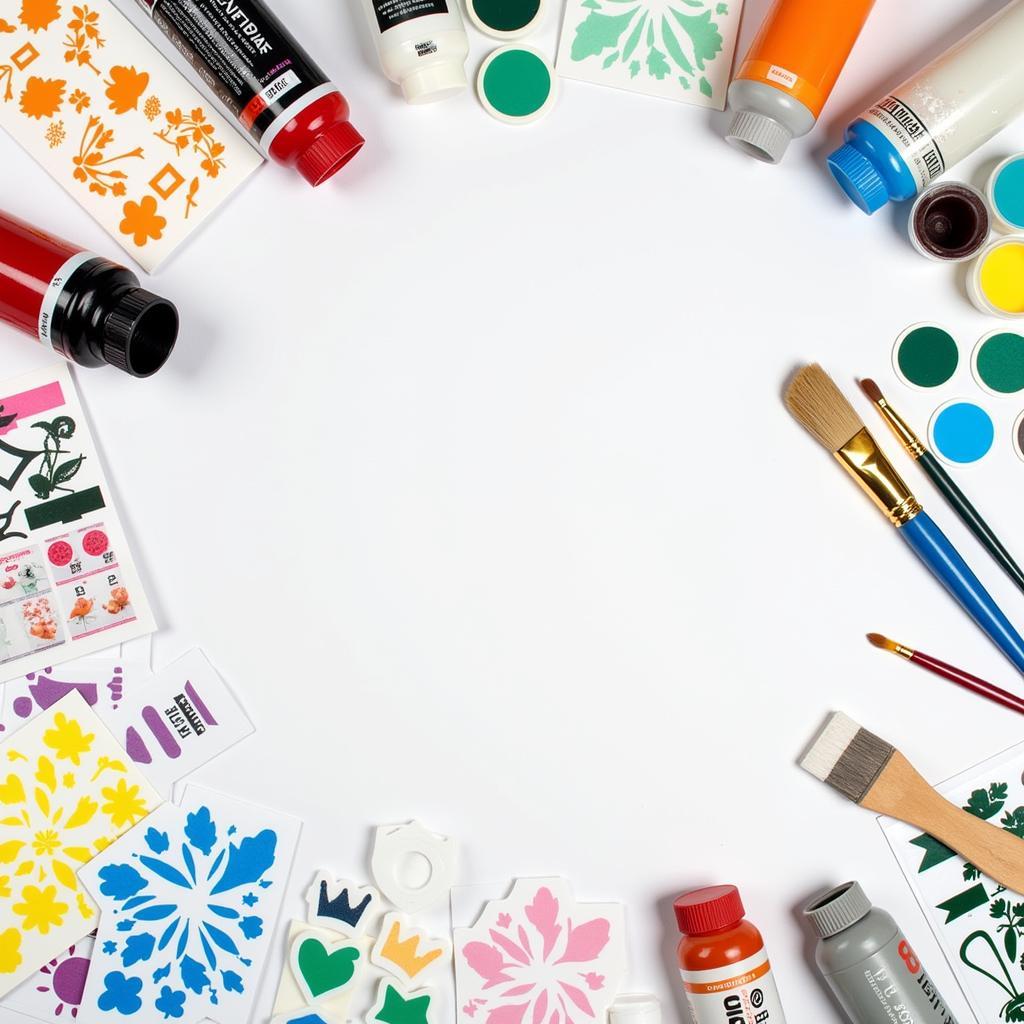Painting Decals: A Comprehensive Guide
October 30, 2024Painting Decals offers a fantastic way to customize and personalize various surfaces. Whether you’re looking to add a unique touch to your car, bike, laptop, or even a wall, painting decals can transform ordinary objects into personalized statements. This guide will delve into the world of painting decals, exploring everything from the basics to advanced techniques.
What are Painting Decals?
Painting decals are essentially stencils used in conjunction with paint to create designs on a surface. They are typically made from thin, flexible materials like vinyl, allowing for intricate designs and easy application. Unlike stickers, painting decals are removed after the paint has dried, leaving behind a crisp, painted design. This allows for greater creativity and control over the final look, offering a level of customization that stickers can’t match.
Types of Painting Decals
Painting decals come in a wide array of designs, catering to diverse tastes and projects. You can find everything from simple geometric shapes to complex, multi-layered designs.
- Single-Layer Decals: These are the most basic type, ideal for simple designs and beginners.
- Multi-Layer Decals: These decals consist of multiple layers, allowing for more intricate and detailed designs with varying colors.
- Custom Decals: For a truly personalized touch, you can create your own painting decals using specialized software and a vinyl cutter.
How to Use Painting Decals
Applying painting decals is a straightforward process that even beginners can master. Here’s a step-by-step guide:
- Prepare the Surface: Clean the surface thoroughly to remove any dust, dirt, or grease. This ensures proper adhesion of the decal.
- Apply the Decal: Carefully peel the backing off the decal and position it on the desired surface. Use transfer tape if necessary for complex designs.
- Burnish the Decal: Use a squeegee or a credit card to firmly rub the decal onto the surface, ensuring all edges are securely adhered.
- Apply the Paint: Using a brush, spray can, or roller, apply the paint over the decal. Multiple thin coats are generally recommended for a smooth, even finish.
- Remove the Decal: Once the paint is sufficiently dry, carefully peel away the decal to reveal the painted design.
Tips and Tricks for Perfect Painting Decals
Achieving professional-looking results with painting decals requires a few key techniques:
- Practice Makes Perfect: Start with simple designs before tackling complex ones.
- Proper Surface Preparation: A clean, smooth surface is crucial for a flawless finish.
- Thin Coats of Paint: Avoid thick coats, which can bleed under the decal and ruin the design.
- Patience is Key: Allow the paint to dry completely before removing the decal to prevent smudging.
Choosing the Right Paint for Painting Decals
The type of paint you use depends on the surface you’re working with.
- Acrylic Paint: A versatile option suitable for a variety of surfaces, including canvas, wood, and metal.
- Spray Paint: Ideal for larger surfaces and achieving a smooth, even coat.
- Specialty Paints: For specific surfaces like glass or fabric, choose paints formulated for those materials.
 Painting Decals on a Canvas with Acrylic Paint
Painting Decals on a Canvas with Acrylic Paint
Painting Decals vs. Stickers: What’s the Difference?
While both offer a way to add designs to surfaces, painting decals and stickers have key differences. Painting decals offer a more permanent, integrated look, as the design becomes part of the painted surface. Stickers, on the other hand, sit on top of the surface and can be peeled off more easily. Painting decals allow for more intricate designs and offer greater creative control over the final product.
Are Painting Decals Difficult to Use?
No, painting decals are generally easy to use, even for beginners. The process is straightforward and requires minimal tools. With a little practice, anyone can achieve professional-looking results.
 Various Painting Decals and Supplies
Various Painting Decals and Supplies
Conclusion
Painting decals are a versatile and creative way to personalize various surfaces. From simple designs to complex artwork, painting decals offer a level of customization that’s hard to beat. With the right techniques and a bit of practice, you can transform ordinary objects into unique, personalized statements with painting decals. Remember to choose the right paint for your surface and follow the application instructions carefully for optimal results.
FAQ
- What surfaces can I use painting decals on?
- Painting decals can be used on a variety of surfaces, including wood, metal, glass, plastic, and canvas.
- Can I reuse painting decals?
- Typically, painting decals are single-use, but some thicker vinyl decals can be reused a few times.
- Where can I buy painting decals?
- Painting decals are available online, at craft stores, and at some art supply stores.
- What is the best way to remove a painting decal?
- Carefully peel the decal away from the surface at a slow, even pace.
- Can I create my own painting decals?
- Yes, you can create your own custom painting decals using a vinyl cutter and design software.
- How long does it take for the paint to dry?
- Drying time varies depending on the type of paint used, but generally allow for at least a few hours.
- What if paint bleeds under the decal?
- Ensure the surface is clean and the decal is firmly adhered to prevent bleeding.
Need more help with painting decals? Check out our other articles on surface preparation, paint selection, and advanced decal techniques.
For support, contact us at Phone: 0915117113, Email: [email protected] Or visit us at: Group 3, Binh An Hamlet, Phu Thuong, Vietnam, Binh Phuoc 830000, Vietnam. We have a 24/7 customer service team.